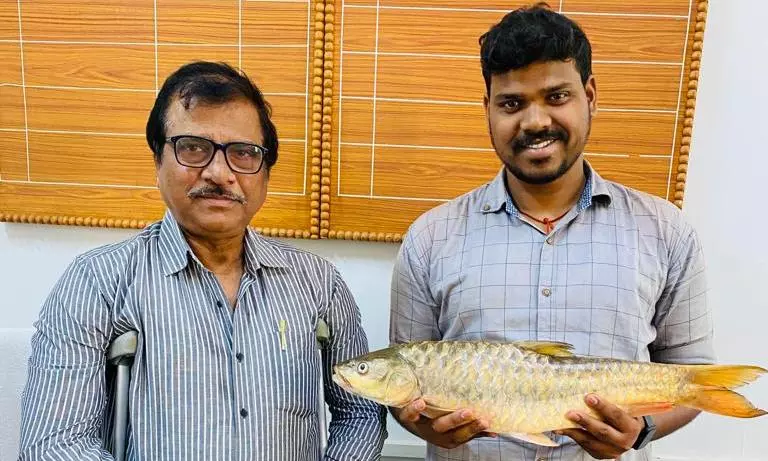Central University researchers make first record of two Mahseer fish species in South Odisha

Bhubaneswar: In a groundbreaking study on biodiversity, researchers from the Central University of Odisha (CUO) have documented two Mahseer fish species for the first time from the Indravati River system in southern parts of Odisha. The research, led by Professor Sharat Kumar Palita, Dean of the School of Biodiversity and Conservation of Natural Resources, marks a significant addition to the region's ecological records.
The Mahseer, a member of the Cyprinidae family, is often referred to as the “King of the Indian Aquatic System” and is revered in many Hindu temples. These large, scaled carps thrive in fast-flowing, cold, and clear hilly rivers. While Mahseer species have previously been reported from regions like the Mahanadi, Brahmani, and Similipal in Odisha, this is the first record from southern Odisha's river systems, including the Godavari basin tributaries such as the Kolab, Indravati, and Machhkund rivers.
The journey began six years ago when Prof. Palita initiated research on Mahseer species with scholar Alok Kumar Naik. Initial specimens were observed at markets in Nabarangpur and later traced to the Indravati Reservoir at Mukhiguda and Kapur Dam in Kalahandi. Laboratory analysis at CUO, confirmed by the Zoological Survey of India (ZSI), Kolkata, identified the species as ‘Tor tor’ and ‘Tor putitora,’ two ‘True Mahseer’ species from the Tor genus.
The discovery is particularly notable for the Golden Mahseer (Tor putitora), previously thought to be restricted to the Himalayan foothills and central Indian rivers like the Narmada. This finding not only establishes the species' presence in the Godavari basin but also extends its known distribution to southern Odisha.
Similarly, ‘Tor tor,’ earlier documented in Similipal and the Mahanadi and Brahmani river systems, has now been recorded in the Indravati river.
Mahseer species hold ecological, cultural, and economic significance. Locally known as ‘Kainsari’ or ‘Mahasol,’ these fish are prized for their game and food value, with some specimens reaching lengths of 275 cm and weights of 54 kg. Despite their importance, Mahseer populations face threats from habitat degradation due to pollution, untreated sewage, and human activity. The International Union for Conservation of Nature (IUCN) classifies the Golden Mahseer as ‘Endangered’ and the Tor Mahseer as Near Threatened.’
Professor Palita emphasized the urgency of conservation efforts. While genetic analysis of the southern Odisha Mahseer populations is nearing completion, sustainable measures are essential to protect their habitats. Encouragingly, several Indian states, including Odisha, have recognized the Mahseer’s ecological value. The Mahanadi Mahseer has been declared the state fish of Odisha, highlighting the species' importance.
This discovery underscores the untapped biodiversity of southern Odisha, particularly in the Koraput region. The Vice-Chancellor of CUO, Prof. Chakradhar Tripathi, congratulated the research team and stressed the study's alignment with Sustainable Development Goals (SDGs). He highlighted the potential for biodiversity research to support livelihoods, urging further exploration to preserve and utilize these invaluable natural resources.
As researchers like Alok Kumar Naik and Anirban Mahata continue their work under Prof. Palita’s guidance, the findings serve as a beacon for conservation and sustainable development in southern Odisha’s unique aquatic ecosystems.
Next Story

